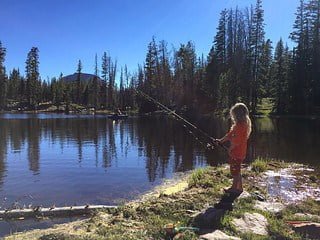Are you an avid angler looking to make the most out of your fishing trips? Knowing the best time to cast your line can greatly increase your chances of reeling in a big catch. In this article, we will explore the ins and outs of the fishing season, providing you with valuable insights and tips to optimize your fishing experience. Whether you’re a beginner or a seasoned pro, read on to discover the secrets of the fishing season.
1. Understanding the Fishing Season
The fishing season refers to the period of time when certain fish species are most active and abundant. It is influenced by various factors such as water temperature, weather conditions, and fish behavior. By understanding the fishing season, you can plan your fishing trips accordingly and target specific species during their peak activity.
2. Factors Affecting the Fishing Season
Several factors play a crucial role in determining the fishing season. These include:
- Water Temperature: Fish are cold-blooded creatures, and their activity levels are directly influenced by water temperature. Different fish species have different temperature preferences, so understanding their preferences can help you determine the best time to fish for them.
- Weather Conditions: Weather patterns such as temperature, wind, and precipitation can greatly impact fish behavior. For example, many fish species become more active and feed more aggressively before a storm, making it an ideal time to cast your line.
- Spawning Periods: During the spawning season, fish are focused on reproduction rather than feeding. It is generally recommended to avoid fishing during this time to allow the fish to reproduce and maintain healthy populations.
- Migration Patterns: Some fish species migrate to different areas during specific times of the year. Understanding these migration patterns can help you locate and target these fish more effectively.
3. Best Time to Fish for Different Species
Each fish species has its own preferred fishing season. Here are some popular fish species and the best time to fish for them:
Bass
Bass fishing season typically starts in the spring when water temperatures rise above 50°F (10°C). During this time, bass become more active and move to shallower waters to spawn. The fall season is also a great time to catch bass as they feed heavily in preparation for the winter.
Trout
Trout fishing season varies depending on the region and the specific species of trout. In general, spring and fall are considered prime seasons for trout fishing. During these seasons, water temperatures are cooler, and trout are more active and willing to bite.
Salmon
Salmon fishing season is highly dependent on the species and the location. In many regions, salmon fishing is best during the summer and fall months when salmon return from the ocean to spawn in freshwater rivers and streams.
Walleye
Walleye fishing season is typically at its peak during the spring and fall. In the spring, walleye move to shallow waters to spawn, making them more accessible to anglers. During the fall, walleye feed heavily in preparation for the winter, making it an excellent time to target them.
Crappie
Crappie fishing season is most productive during the spring and fall. In the spring, crappie move to shallow waters to spawn, making them easier to locate and catch. During the fall, crappie gather in schools and feed actively, providing anglers with great opportunities for a successful fishing trip.

Fishing success can greatly depend on the species you’re targeting and the time of year. Here’s a table outlining the best times to fish for various species based on the general seasons:
| Fish Species | Best Time to Fish | Seasonal Considerations |
|---|---|---|
| Bass | Early morning or dusk | Spring and fall are prime; summer early mornings or evenings |
| Trout (varies by type) | Early morning or evening | Spring and fall for most types; winter for certain species |
| Salmon | Early morning or evening | Fall for most runs, varying by type and location |
| Catfish | Evening or overnight | Spring and fall, often more active in warmer months |
| Crappie | Early morning or evening | Spring and fall, especially during spawning seasons |
| Walleye | Early morning or evening | Spring and fall are peak times; night fishing can be good |
| Panfish (e.g., bluegill, crappie) | Morning or late afternoon | Spring and fall are usually best |
| Northern Pike | Dawn and dusk | Spring and fall are prime; summer dawn and dusk |
| Striped Bass | Early morning or dusk | Spring and fall, coastal areas; summer in deeper waters |
| Redfish | Early morning or dusk | Year-round, but fall and spring are typically more active |
Note:
- Fishing times can vary based on factors such as location, climate, and specific water conditions.
- Some species may have variations in the best time to fish based on their subtypes (e.g., different types of trout).
- Local knowledge and consulting with local anglers or guides can provide more specific and accurate information for your area.
Understanding the behavior and habits of the specific fish species you’re targeting, as well as the seasonal variations, will greatly enhance your success as an angler. Always comply with local fishing regulations and guidelines to ensure sustainable and responsible fishing practices.
FAQs on Fishing Season
Q: Can I fish year-round?
A: Fishing season varies depending on the species and location. While some fish can be caught year-round, others have specific seasons or regulations in place to protect their populations during vulnerable times.
Q: How can I find out the fishing season for a specific species in my area?
A: Local fishing regulations and resources such as state fish and wildlife departments can provide information on fishing seasons and regulations specific to your area. Additionally, local fishing guides and experienced anglers can offer valuable insights and tips.
Q: Are there any restrictions during the fishing season?
A: Fishing regulations may include restrictions on the size and number of fish you can catch, as well as specific fishing methods and gear allowed. It is important to familiarize yourself with these regulations to ensure you are fishing within the legal limits.
Q: Can weather conditions affect the fishing season?
A: Yes, weather conditions can have a significant impact on fish behavior and activity levels. Factors such as temperature, wind, and precipitation can influence feeding patterns and the overall success of your fishing trip.
Q: Is it better to fish during the day or at night?
A: The best time to fish during the day or night depends on the species you are targeting. Some fish, such as bass and walleye, are more active during low-light conditions, making early morning or evening fishing more productive. However, other species, such as trout, can be caught throughout the day.
Conclusion
Understanding the fishing season is essential for any angler looking to maximize their fishing success. By considering factors such as water temperature, weather conditions, and fish behavior, you can determine the best time to cast your line and increase your chances of landing a trophy catch.
So grab your fishing gear, plan your trips accordingly, and get ready to reel in some unforgettable memories. And remember, the fishing season is not just about the catch—it’s about the joy of being out on the water and connecting with nature.
Fun Fact: Did you know that the longest recorded fish ever caught was a blue marlin measuring a staggering 16.5 feet (5 meters) long? This impressive catch was made off the coast of Vitoria, Brazil, in 1992.
Originally posted 2023-09-01 23:56:41.



